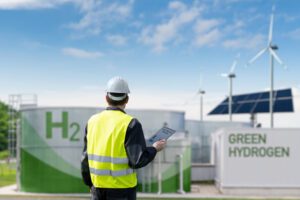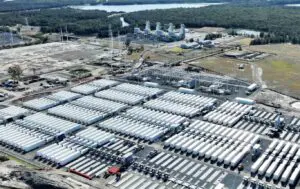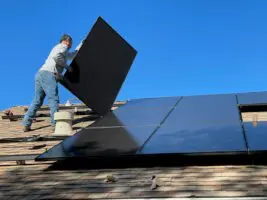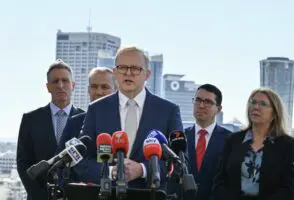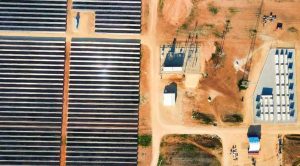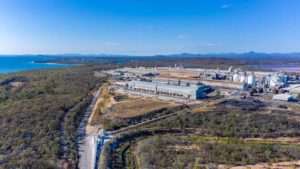Both the Labor and the Liberal-National Coalition publicly profess the importance of combating climate change and developing Australia’s innovation capabilities. Yet last election they inexplicably chose to abandon both by stripping ARENA of all its funding to support research and development in renewable energy.

They did this even though there is likely to be a large source of potential revenue available to the government soon from power companies paying penalties from failure to meet the Renewable Energy Target.
Thankfully, yesterday Labor and the Coalition backed away from this decision in negotiations over the Budget Savings Omnibus Bill, electing to maintain $800m of the $1.3 billion ARENA once held.
Yet the fact that both sides of politics came so close to agreeing to gut innovation support for renewable energy should give those of us concerned about climate change a great deal of pause for thought. It also represents a chance for us to reflect again on what we believe ARENA’s priorities and activities should be, and how we ensure it is adequately funded.
Decarbonising the world’s energy supplies before 2050 presents an incredible challenge, and one where Australia should be able to make a meaningful contribution and will be a significant beneficiary. And if we are looking for areas where innovation will generate considerable payoffs, you’d be hard pressed to think of a better area of need.
First and foremost, we should all be shocked that a prime minister seeking to position himself as Mr Innovation, and a Labor Party that spouted exactly the same message, agreed that while they might want to spend lots of money on a single solar thermal plant in Port Augusta (replicating ones already in existence), they were willing to strip funding from some of the world’s best scientific researchers of solar photovoltaics.
University of NSW Professor Martin Green, and the team of researchers he has taught and fostered since the 1980s, have played a pivotal role in converting solar photovoltaics from a quaint and expensive curiosity into the world’s second largest source of new power generation capacity.

Recent government energy procurement auctions in the Middle East and South America indicate solar photovoltaics are now the cheapest source of power available in large parts of the globe near the tropics.
Between 2008 to 2013, as Chinese manufacturers transformed the global solar PV industry into an affordable, widespread technology, it was his former students that were leading the charge as these companies’ Chief Executives and Chief Technology Officers. His research has been pivotal in advancing the efficiency with which solar panels can convert sunlight into electricity. As an example an advancement in the efficiency of solar cells his team developed (known as PERC) will be incorporated in half of the globe’s solar panels over the next few years.
Martin Green is the kind of person that forms the seed from which advanced knowledge industries like Silicon Valley are grown. A person who attracts top talent from around the world to learn from him and the other clever people he has gathered around him. In other countries they are showered with resources and support from their governments. ARENA’s provision of grants has been very important to his work but also that of other capable solar energy researchers in other Australian Universities.
Loans aren’t much good to such researchers unless of course you’re happy to give them out without expecting repayment. The reason is because such research is exploratory in nature, with very long lead times before it delivers improved saleable products. At the same time to maximise the value from such research it is important that other researchers outside the original innovator test, borrow and build-upon the learnings, rather than keeping it private to capture a future profit.
Supporting the work of these researchers should surely rank above a one-off, relatively small solar thermal plant. But that’s not what our politicians heard from the community.
At the same time, of course, we won’t manage to fully replace fossil fuels just with more efficient solar panels, even if supplemented with wind power.
We need to advance technology, such as solar thermal, that gives us the capability to match the supply of energy with demand, irrespective of what’s happening with the wind and sun at the current moment. But this needs a long-term, well-funded, multi-stage and multi-pronged strategy. Building a solar thermal plant with several hours of heat storage could be a useful contribution to such a strategy, but let’s make it part of a strategy rather than a popular campaign.
Sure, $800 million dollars shouldn’t be sneezed at. But to execute this strategy of bridging the gap between what wind and solar PV can provide (they are the indisputable winners of the low carbon energy race by the way) and what we ultimately need will require more money.
Of course, there are a range of other worthy causes that are competing for limited budget funds. But what seems to have been neglected is that the government will soon receive a windfall of revenue not recorded in the budget.
Under the prior Prime Minister Tony Abbott, investment to build large, mature renewable energy projects like wind farms stalled under the expectation he would axe the Renewable Energy Target. Three years were lost and investor confidence severely undermined. Consequently, it is likely that power retailers will not manage to meet the Renewables Target in 2018 and most likely fall short for a few years after this. In falling short they will have to pay penalties to the government. One cannot be certain exactly how much will be paid to the government in penalties, but it is likely to be in the realm of several hundred million dollars.
Rather than being handed to the government, this revenue from penalties could be funnelled to ARENA. Ultimately this will benefit energy consumers by funding innovation that reduces the cost of our energy supplies in the future as we lower carbon pollution.
The leaders of both our major political parties were keen to claim that they would foster a national economy built on innovation. They have opportunity to convert Tony Abbott’s misguided attack on renewable energy into a springboard for innovation in cheaper, more reliable, zero emission energy.
Tristan Edis is Director – Analysis & Advisory at Green Energy Markets. Green Energy Markets assists clients make informed investment, trading and policy decisions in the areas of clean energy and carbon abatement.


